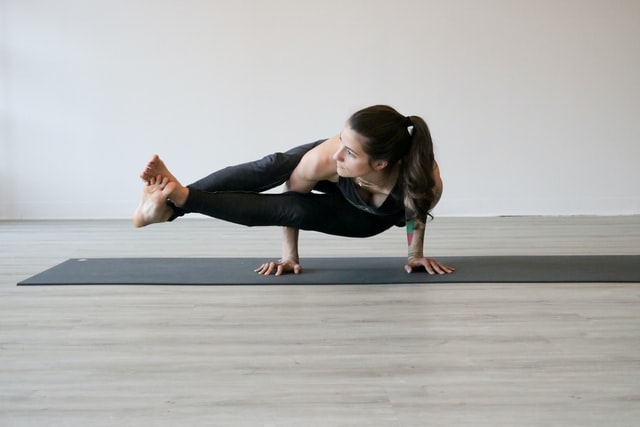Calisthenics diet, a minimalist approach
If you don’t already know Fitenium is a free, mobile, video-based social network for athletes who train strength or bodyweight exercises. At Fitenium users can share the progress they make from training and following a good calisthenics diet. Download it here.
One of the factors that most attracts people to bodyweight training is its simple nature. You don’t need to join a gym and you don’t need a lot of equipment either. Only with your body and at most on the bars of your nearest park to start training and obtain “gains” of strength and muscle mass. However, considering that in calisthenics and street workout our body is our main tool to exercise, it is even more important to maintain it in an optimal state to gain control over it. That is why we are going to help you with the principles of the calisthenics diet so that you can progress as much as possible in a natural and healthy way.
We defend 4 principles when designing a calisthenics diet, which are the following. It is nothing complex or sophisticated, no supplementation or precooked food is used, the strategy for success is based on these four pillars.
Avoid junk food, prioritize natural foods.
Obesity is an increasingly widespread pandemic in the world. Many Spanish-speaking countries are in the highest positions in the hateful ranking of countries with the highest obesity rate, highlighting the cases of Mexico and Chile, with rates above 25% in the case of Chile and a worrying 32% for the North American country, only surpassed by the United States.
Currently there is a tendency to overuse processed foods that do not contribute anything and are more expensive than the sum of their ingredients and, although we are very clear that a food should not be demonized because it is processed (a yogurt, for example, is processed and can be very healthy), for our calisthenics diet whenever we have doubts it is better to opt for foods with as short a list of ingredients as possible.
It is clear that we are interested in maintaining a low fat percentage for the practice of calisthenics and for this, sugary foods or foods high in saturated fat will provide a very high amount of calories and very little satiety. Of course there are sugar-free soft drinks and they are not a bad option to drink from time to time, but our recommendation will always be to drink water.
Take your protein! Calisthenics diet needs it
Whether we want to gain muscle mass or lose fat, protein plays a very important role in both processes. It is true that if we are in a stage of fat loss, in order to maintain all the lean mass possible, the grams of protein per kilo of weight. You can expand more information in our two articles on how to lose fat and about how to gain muscle mass, but to summarize about the consumption of fat in both phases, it is normally recommended to consume between 1.8 and 2.5 grams of protein per kilo of weight, tending to the ceiling if we are in the definition phase and to the floor if our goal is to win fat.
Where to get that protein? It’s not complicated, there are many quality sources available within real food. The most common option is meat, but we must not forget the protein available in other foods such as eggs, dairy, fish… or if you are vegan there are options such as legumes, soy and others. In the following table we can find a protein reference per 100 grams of various foods.
Chicken breast: 23gr
Turkey breast: 24gr
Lean beef: 22gr
Lean Pork: 22gr
Serrano Ham: 36gr
Stuffed Loin: 38gr
Tuna Steak: 24gr
Tuna: 21gr
Salmon: 21gr
Mackerel: 15gr
Sardinas: 24gr
Octopus: 15gr
Calamar: 16gr
Egg: 13gr
Egg whites: 11gr
Whole Milk: 8gr
Lechi Seeds: 8gr
Skimmed Milk: 8gr
Fresh Cheese: 12gr
Semi-cured cheese: 23gr
Cured Cheese: 25gr
Old Cheese: 25gr
Fresh Shake Cheese: 8gr
Queso Quark: 12gr
Lentils: 25gr
Chickpeas: 19gr
Beans: 21gr
Textured Soy: 50gr
Peanut: 30gr
Almendras: 25gr
Anacardo: 22gr
Regarding whey protein, despite the fact that it is a processed food, we believe that it can be useful for people who have difficulties reaching the protein weight they are looking for. Vegans generally have a much more difficult time than omnivores, so whey protein is even more useful in this case. However, do not worry, the Frank Medrano diet is vegan and is a benchmark in the world.

Of course, if your economy allows it and you have access, we recommend buying grass-fed meat, free-range eggs, free-range chicken, etc… the flavor and fairer treatment of animals are worth it.
Finally, if we are in a stage of fat loss, we must bear in mind that some of these foods (salmon, nuts, cheese…) apart from protein, have a high amount of protein, they are also rich in fat of quality, which are necessary for a balanced diet, but are caloric and therefore we recommend eat them in moderation.
Carbohydrates and dairy, how to manage them?
Although protein is perhaps the most key macronutrient of all, carbohydrates provide the energy that a good calisthenics diet requires if you are to perform on the bars.
While many people are against adding grain and dairy to the diet because they supposedly promote intestinal inflammation, a large number of other athletes take milk and gluten with no problem. In general, from Fitenium we recommend that you take both if you do not have any intolerance and they feel good, but if you constantly have bad digestions, try to stop taking them to see if they are the reason.
On the other hand, we must be careful with the carbohydrates we choose. We must prioritize slow-digesting or complex carbohydrates, which fill us up for longer and do not create insulin spikes. Some of them are tubers, rice, pasta, bread or cereals taking care that they are integral. Ideally, they should be low in sugar and high in fiber to go to the throne like clockwork :).
What about the fruit and vegetables in the calisthenics diet?
If you have doubts about eating fruit or not eating it, eat it. It is a very healthy food with an enormous nutritional contribution, perfect for a calisthenics diet. In addition, they are generally low in calories and create great satiety, so it is difficult to screw up your caloric deficit with apples.
However, it is true that other more caloric fruits such as bananas or grapes should be taken because they are nutritionally quite good but in moderation. I wouldn’t worry too much about the sugars in the fruit, since they are naturally present in the food and not added as in so many processed foods.
Regarding vegetables, eat all you want and more, the more varied the better.
conclusions
We must take care of our body above all, but if it is our training tool, even more so. It is key for a calisthenic to be low in fat to progress in exercises with your own body weight, for which we must try a moderate and high protein intake, the first step is to avoid junk food. In general there are many sources of real food with quality protein, but nothing happens if we help ourselves with a protein shake.









